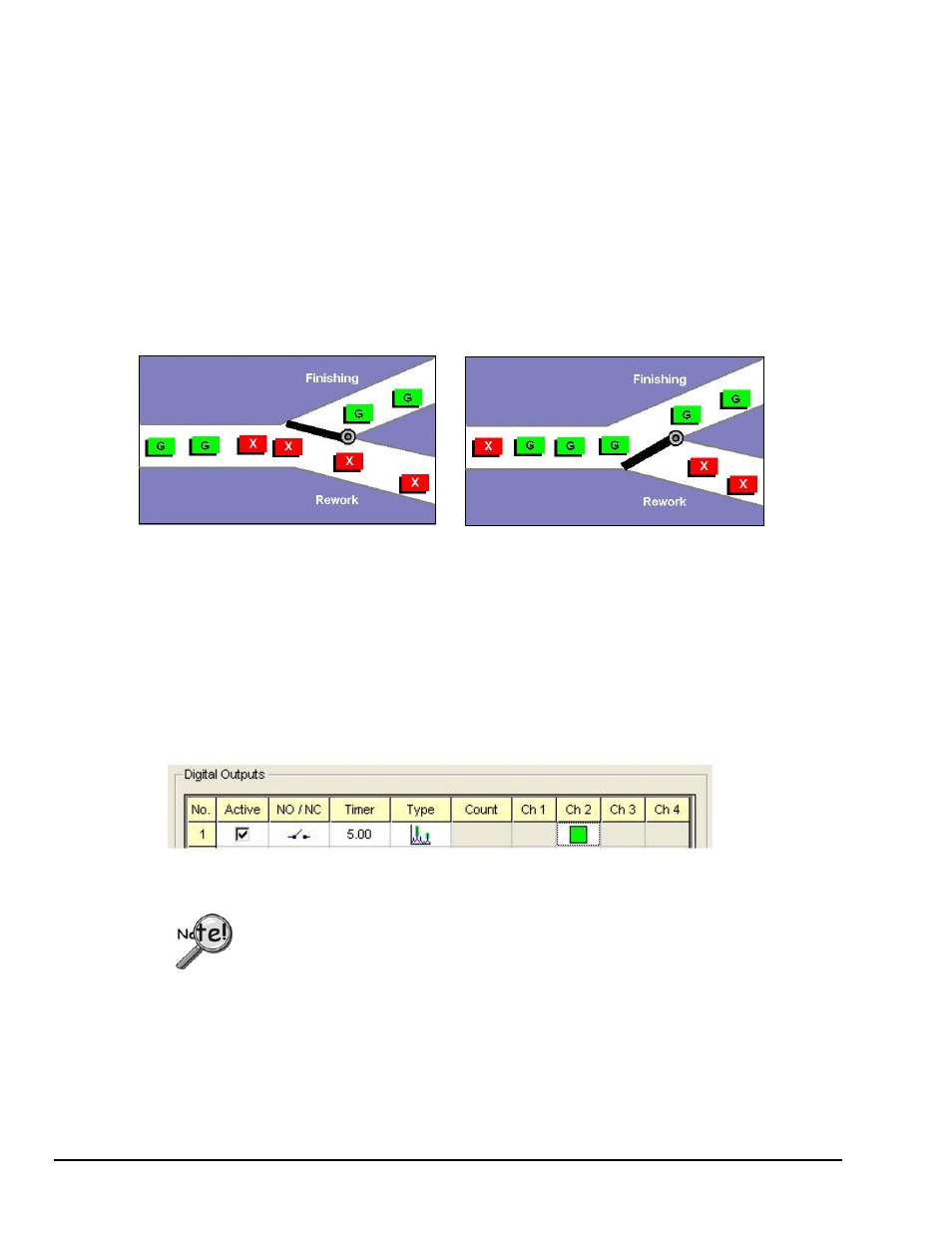Measurement Computing eZ-NDT version 6.0.9 User Manual
Page 36

4-
16
Windows and Menus
878493
eZ-NDT
An Example of Automation Relays at Work, Using the Response Channel Type
When the result of the part is equal to the result indicated by the Digital Outputs panel, the operating
state of the associated relay changes and a signal is sent to the relay switch.
Conversely, when the result of the part does not equal the result indicated by Digital Outputs panel, the
state remains unchanged and no signal is sent to the relay switch.
In this example, assume that we want all tested parts (good and bad) to be sent by conveyor to one of two
processes. Good parts go to finishing and bad parts go to rework.
We don’t want a failure of the relay switch to result in bad parts being misdirected to the finishing process.
Therefore we set up the conveyor so that the path to finishing is normally blocked, that is, it will be block
when there is no power to the relay. That path is only to open for reception of good parts.
In the following gate-related figures, Good parts are designated with a “G” and Bad parts are designated
with an “X.”
The relay is “de-energized” (normally open)
and the gate prevents entry to Finishing.
The relay must be energized (by seeing a good
part) in order to open the gate.
The relay is “energized” and the gate to
finishing is open until the timer times out.
Good parts keep the relay energized, therefore
keeping the gate open to “finishing.”
Example of an Automation Relay being used to Control a Gate
This means that the relay switch should be normally open (no current). When a good part activates the
relay switch, the switch closes. This sends power to open the gate to finishing. A bad part does nothing to
the relay. For bad parts the relay remains open and the gate to finishing remains without power. The bad
parts proceed on to rework. See the above diagrams.
Digital Setup for the Example
The timer must be set to allow enough time for one good part to pass through the open
gate. If a good part is followed by a bad part, the gate to must be able to close in time to
prevent entry of the bad part.
